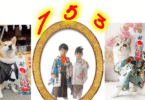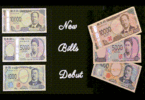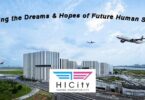Truly a savior! Japanese inventor, Mr. Kanetoshi Oda, who turns wastewater into clean water, solving Africa’s drinking water problem.
It’s unbelievable that this dirty water is now drinkable, thanks to Japan’s incredible technological prowess that has the world in awe.
Hi how are you? Today I’d like to talk about a story that has contributed greatly to those who are in need of water. Please watch the video with English subtitles first.
In impoverished nations, countless children continue to lose their lives due to unclean water sources. Stepping up to make a difference is Mr. Kanetoshi Oda, a Japanese individual who has dedicated years to this cause.
He utilizes his own invention, the “Water Purification Agent PGa21CA,” to easily and affordably transform contaminated water into clean water.
Contents
At Somalia
In 2012, Mr. Oda embarked on a mission to Somalia, Africa. At the time, Somalia was considered one of the world’s most dangerous countries due to ongoing conflicts lasting over two decades.
He undertook this perilous overseas support mission under the protection of armed mercenaries, as it was unclear when Islamic extremists might attack.
This place is a refugee camp where people who have fled from the horrors of war seek shelter. Approximately 20,000 people call this place home. Due to the years of intense conflict, there are no smiles to be seen. How is their drinking water situation?
Mr. Oda asks to be shown the living water source. What he discovers is not just muddy river water but a mixture of various contaminants.
He gathers everyone in a community hall within the camp. He says, ‘This water was just collected from the river a while ago.
I will now transform it into clean drinking water in no time.’ To prove his point, Mr. Oda begins an experiment.
He adds the purification agent and stirs. Soon, the dirt and impurities begin to clump together. The contaminants from the river water start separating due to the power of the purification agent. After filtration, clear water emerges.
The children look on in astonishment, as if they’ve witnessed magic. Mr. Oda drinks the water himself in front of everyone, and he encourages the children to do the same.”
The smiles of the children
Furthermore, Mr. Oda creates a large purification system at a cost of less than 100,000 yen (funding provided by the Japanese government).
It’s cheaper and safer than digging wells. As usual, Mr. Oda drinks the water himself to confirm its quality.
The children are captivated by the clean water, perhaps experiencing such transparency for the first time. Amid the uncertainty of life in the refugee camp, smiles have returned after a long time.
Finally, Mr. Oda places the Japanese flag, symbolizing Japan’s support, on the purification system. The rising sun flag in distant Somalia—upon seeing this, Mr. Oda, who is about to turn 72, expressed his hope to continue helping eliminate this dire situation from around the world until he reaches 80.
Nine years have passed since then, and Mr. Oda continues to send purification agents worldwide without interruption.
He turned 81 this year. Support for Somalia is ongoing. Mr. Oda’s company, in collaboration with international organizations, has installed purification systems in over 40 locations in Somalia, successfully reducing cholera incidents in the country’s refugee camps.
His purification agent has been exported to 80 countries and regions, saving numerous lives.
25% of the World
As of 2022, the world’s population has reached 8 billion people, and astonishingly, 2.1 billion people do not have access to safe drinking water. This amounts to a staggering 25% of the world’s population.
One in four people cannot access clean water. Contaminated water leads to infectious diseases and diarrhea.
According to UNICEF, it is estimated that every year, 360,000 infants in impoverished countries lose their lives due to drinking polluted water.
You might think that building water treatment facilities is the solution, but many impoverished nations lack the technology and funds for such infrastructure.
Therefore, what these countries need are cost-effective and straightforward methods to transform dirty water into clean water.
Just when it seemed that such a convenient solution was impossible, Mr. Oda’s creation, “Water Purifier PGa21CA,” made the impossible possible.
How Does It Work?
So, what kind of technology did Mr. Oda develop for water purification? This water purifier is a coagulant primarily composed of “polyglutamic acid.”
You might not be familiar with the term polyglutamic acid, but it’s an amino acid that creates the stickiness in natto, a traditional Japanese food.
When you add “PGa21CA” to contaminated water and stir, it miraculously coagulates impurities, bacteria, and even toxic heavy metals in a short amount of time, forming a slimy mass similar to natto, which then settles to the bottom.
In other words, it separates only the dirt from the water. However, this purifier does not have disinfection properties, so it’s safer to either boil the water or add chlorine before consumption.
Nevertheless, it removes most bacteria like E. coli. What’s more, the efficiency is extraordinary, with just one gram of “PGa21CA” purifying 10 liters of contaminated water.
Additionally, its price is unbelievably low, as it’s available for just $1 per 100 grams (approximately 140 Japanese yen).
This means that you can obtain 1,000 liters of safe water for 140 yen. This makes it accessible for people in poverty.
In fact, this purifier has gained significant recognition worldwide and is currently solving the drinking water issues for 5.5 million people across 40 countries.
The Development Process
So, how did such an incredible water purifier come into existence? In 1995, Mr. Oda, who was an engineer at the time, experienced a severe water shortage during the Hanshin-Awaji Earthquake.
Looking at a nearby pond filled with unusable water, he thought, “There’s plenty of water in this pond, but it’s useless…”
He then recalled from an old research paper that “polyglutamic acid had water purification properties,” a substance produced by natto bacteria.
However, the cost of producing polyglutamic acid was prohibitively high, preventing practical use until then.
At the age of 61, Mr. Oda took action and established the Japan Polyglu Corporation, where he spent three years cultivating natto bacteria to produce polyglutamic acid in large quantities, finally achieving practicality.
Unfortunately, this purifier did not sell well in Japan at the time since the country generally has access to clean water, except during disasters.
However, a significant turning point came for Mr. Oda several years later in 2004 with the occurrence of the Sumatra Earthquake.”
Emergency Overseas Support
At this time, the Thai government approached Mr. Oda’s company for assistance in providing drinking water.
In Thailand, they were facing a situation where French-made purification equipment, costing millions of yen, was not functioning as expected.
Mr. Oda’s Japan Polyglu decided to provide a simpler and cost-free water purification agent. This Japanese-made purification agent, which could produce large amounts of drinking water in just a few minutes, surprised the residents and helped many victims suffering from water scarcity.
This news spread, and in 2007, when Bangladesh was heavily affected by a cyclone, Japan Polyglu received a request for support and provided free purification agents.
After the free supply to Bangladesh, a local charity placed an order for an additional 300 kilograms of water purification agent.
This could have been a lucrative business, but Mr. Oda had a different perspective. He was concerned about whether this water purification agent would reach the people who were genuinely struggling at an affordable price.
He found himself in a dilemma – if he sold it for a high price as a business, it wouldn’t reach those in need, but if he provided it for free as a volunteer, the company would collapse.
Therefore, Mr. Oda began thinking of ways to balance business and volunteerism.
Inspiration Struck
The solution he found was “demonstration sales” by local residents. Local women became “Polyglu Ladies” and went to nearby villages, demonstrating the use of the water purification agent by adding it to dirty water and making it clean, then drinking it.
This demonstration was highly effective for two reasons. In Bangladesh, where the water supply rate was less than 10%, clean water was indeed precious, but people were often skeptical about whether the water was genuinely clean.
However, when they saw the Polyglu Ladies drink the water that had become clean right before their eyes, they became willing to pay for it, feeling assured. Another reason was that the same women who performed the demonstration were mothers, which made the female villagers feel more comfortable about giving this water to their own children.
Witnessing the success of the Polyglu Ladies had an unexpected multiplier effect, as local men started suggesting that they could go further using boats to sell it.
So, “Polyglu Boys” were born. The Polyglu Boys ventured deeper into the countryside and began selling the water purification agent.
With this sales method established, Mr. Oda managed to balance the volunteer aspect of providing affordable water to those in need and the business aspect of expanding sales through the Polyglu Ladies and Polyglu Boys.
Empowering Local Communities
Inspired by the success in Bangladesh, Mr. Oda’s company, Japan Polyglu, expanded its operations to India, Nepal, Tanzania, and other parts of the world.
What’s even more remarkable is that the people sent as local trainers to various countries were not Japanese but rather the Polyglu Ladies and Polyglu Boys from Bangladesh and other impoverished regions.
Until then, it was unheard of for individuals from developing countries to go abroad as trainers.
However, the Polyglu Ladies and Polyglu Boys, who had gained expertise, successfully led local launching activities in foreign countries.
This success instilled them with great confidence – they proved that individuals from developing countries could achieve this as well.
In other words, Mr. Oda’s water purification agent deployment contributed not only to providing clean water but also to the self-sufficiency and employment of local communities.
This matter became a significant topic of discussion worldwide, and many people offered their comments.
International Reactions
This technology has the potential to make people around the world happy. People who can’t access clean water will be quite delighted, and it can save many individuals in disaster-stricken areas.
I heard that this purifier is also effective against substances like arsenic and the radioactive element cesium. Inventing an affordable purification agent is impressive, but building a business model that ensures it reaches those who truly need it is truly remarkable.
This person called Mr. Oda Kenzato is genuinely incredible.
In conclusion, Mr. Oda said, “This purification agent must be affordable for those who cannot afford to buy mineral water.
Water is used every day, so sustainability is crucial. Consequently, it’s necessary to generate profits. Through technology, we can protect lives and promote employment and self-sufficiency.
Perhaps Mr. Oda’s approach is what defines true support.”
Thanks for visiting here, have a good day!














